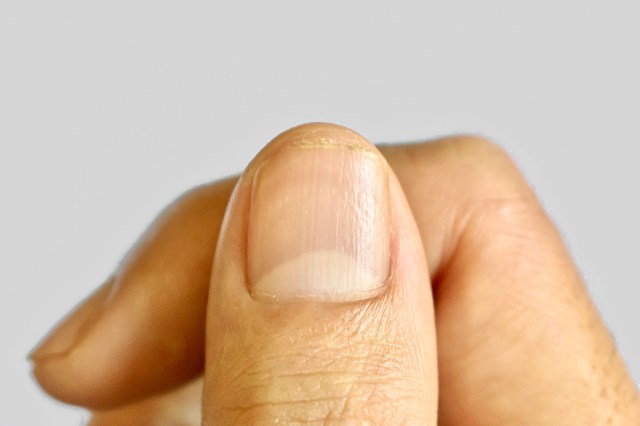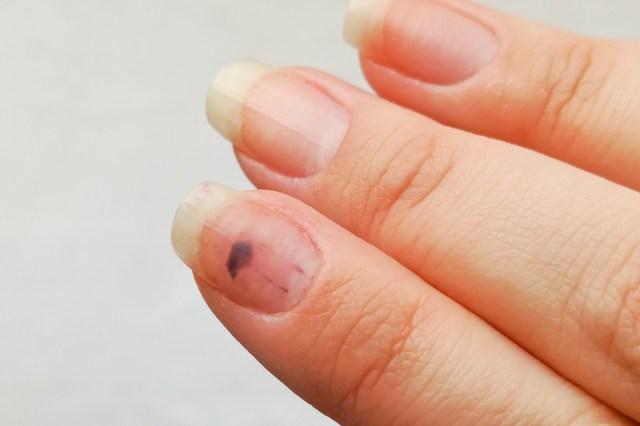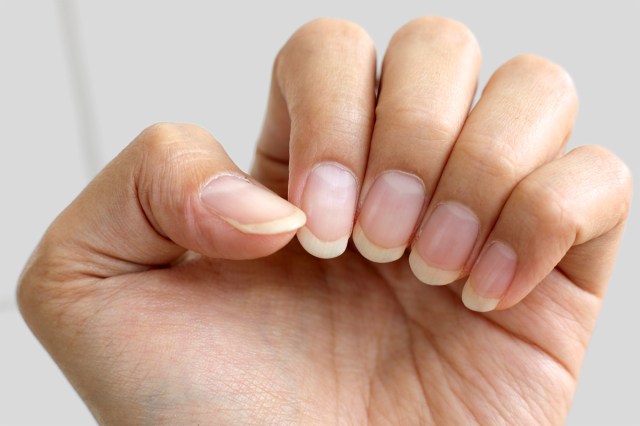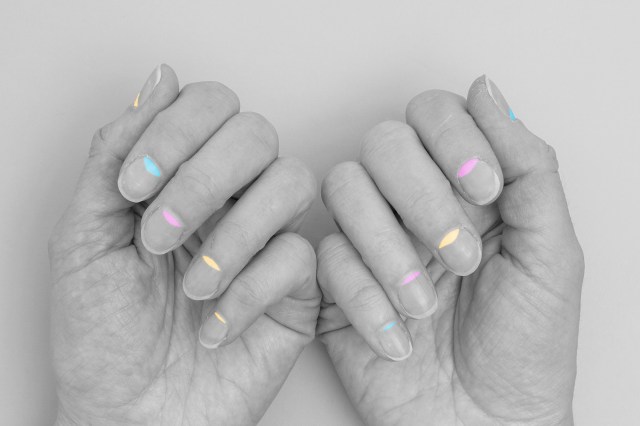
The Scientific Name Is Latin for “Little Moon”
The crescent-shaped mark at the base of the nail is known scientifically as the lunula, which is Latin for “little moon.” Although it has its own specific name, the lunula is only the visible part of a larger structure known as the nail matrix. That structure is one of the four major parts of the fingernail, along with the nail plate, nail bed, and the skin surrounding the nail (including the cuticle). Arguably, the matrix, which contains nerves, lymph, and blood vessels, is the most important of the four as it produces the cells that eventually harden into nail plates.
Although the lunula can be many colors (more on that later), it typically appears white because it’s made of layers of newly formed cells that haven’t fully hardened and become transparent yet. (The rest of the nail is a pinkish color because the transparent plate allows the blood underneath to show through.) Sometimes lunulae will be easily visible and other times they can be obscured — usually because they’re hidden under the cuticle, though in some cases an obscured lunula could be a sign of a medical condition such as diabetes or heart disease.

The Color Can Be an Indicator of Health
The lunula, and the fingernail more generally, is a remarkable glimpse into our overall health. Typically, a healthy person will have white lunulae, but if the area is a different color it could be indicative of a potentially serious health condition. According to Healthline, the lunula can appear in various colors including blue, brown, black, red, and yellow, and can be an indicator of diabetes (pale blue), heart failure (red), renal failure (brown), or other serious conditions. This is why doctors will often examine your nails when you go in for an annual physical.

It’s a Visible Part of Nail Growth
The nail matrix serves another important function: regenerating the nail. Although it may not seem like it, our nails are always growing. They grow out from the base of the nail at a rate of roughly 1 nanometer (one-billionth of a meter) every second, which averages to about 3.47 millimeters per month. (If you’ve ever noticed that you tend to trim your fingernails more frequently than your toenails, that’s because a toe’s nail matrix produces only 1.62 millimeters of nail per month on average.)
Nails grow from the nail matrix (which includes the lunula), where special cells create multiple layers of keratin, the same protein that makes up hair. The typical nail has roughly 196 layers of these cells. So the lunula is essentially the visible portion of the growth zone, where new cells are actively produced right before your eyes.









